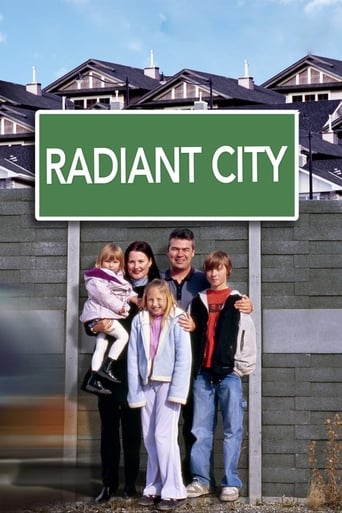djderka
Yet another disjunctive 'documentary' about the 'horrible evils' of suburbia, even tho millions of people want to live there.One 'expert' says, James Howard Kunstler: "Eighty percent of everything ever built in North America has been built in the last 50 years. And most of it is brutal, ugly, depressing, unhealthy, and spiritually degrading." Um...he is talking about cities.Let see cities...crowding, rat like feelings, noise, pollution, crime, high cost of condos, poor schools, constant construction noise why would you ever leave?Oh, the burbs, nice yard, garage, garden, wholesome activities, clean environment, no noise, birds, squirrels, deer and a closer touch with nature, more bedrooms for kids, better schools, and no high rise Soviet style urban housing.If you think kids taking gymnastics is funny, try having them on the street shooting each other and lingering on corners selling drugs. How is that for your cityscape.In a funny ironic twist - this clone of other 'documentaries' is a carbon copy to the same worn out theory - suburbs bad, city good. Give me a break. And the same 'experts' with their pet theories on human behavior. Ever ride the subway in NYC? No one and I mean no one looks or talks to each other - they know better. They might get shot. So much for their bogus 'community theories' that are fantasy.
simscommercial
Having been in the throngs of urban planning and real estate development, Radiant City caught my eye as an informative look at the "suburban sprawl" problems plaguing metropolitan areas today. If you take away the human stories in the film, you actually wind up with a fair accounting of what is currently happening to our cities in North America. The film is shot in Canada and it is refreshing to see that the USA has a lot in common with Canada. Sustainable development seems to have addressed the sprawl epidemic since 2006 and urban planners had stopped bellyaching about it so much. If the film would have stuck to statistics and more human behavior aspects of the suburban sprawl it might have had more impact, putting the human stories in certainly diminished the impact of the doc-u-statement.
John Seal
Is there anything more deadening and depressing than the suburbs? This excellent Canadian documentary perfectly captures the anodyne character of North American bedroom communities with daft, inappropriate names like 'Evergreen','Copperfields' and 'Bordeaux'. Blending interviews with social scientists, architects, and just plain folks who find themselves commuting two hours of more every day in exchange for a cookie-cutter house in a cookie-cutter sub-division, Radiant City cuts to the meat of the matter when one of the talking heads equates the suburban lifestyle to a zombie movie. If you've ever lived in one of these wretched non-communities (as I did for ten long, tortuous years), you'll recognize yourself or someone you know amongst the film's protagonists, the Moss family, and their assorted friends and neighbours.
rasecz
The pros and cons of the type of suburban sprawl that characterizes the second half of the XXth century, the exodus of the inner-city dwellers to the homes and low-rises of the suburbs, and the consequence of this form of urbanism on communities and people. Those are the primary topics of this needling documentary. By means of (1) following a family of sorts as they cope with the pluses and minuses of living on one of the residential pods of modern car-based urbanism, (2) fascinating statistics, and (3) interviews with academics, urban planners and critics, the film paints a mixed view, though the bias is obviously against that form of social organization. Some of the interviews are trenchant and humorous, especially those of James Howard Kunstler. Just those are worth the price of admission.The film has a surprise in store, but even after the cat is out of the bag, the main points are not in the least affected.


